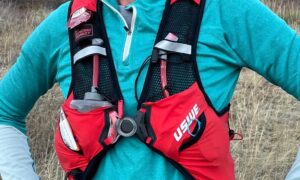Is pronation something you are familiar with? Have you ever thought about the fact that the way you pronate plays a huge role in the way you run, and can lead to foot injuries as well as shin splints for runners?
When a foot strikes the ground, its heel is immediately pushed forward and rolls towards the toes. In order to spread your body weight evenly across your foot, this movement is very important because it assists you in absorbing shocks from the ground and helps you in pushing yourself off of it.
Check also the best dainty ring for your loved one.
It is very common that foot and gait problems have a negative effect on how your foot moves.
It’s Normal to Pronate
Pronation while walking or running is completely normal, so you shouldn’t worry about it.
Pronation, or neutral roll, is considered by some to be a form of normal pronation. When you distribute your weight evenly across the area of your foot, it allows you to absorb shock the most evenly.
I recommend you check the wear pattern on your running shoes – if they show a pattern that looks like an “S” between your heel and big toe, it likely means that you pronate to the neutral position.
An overpronated foot
In the case of overpronation, the foot rolls inward more than 15 degrees as a result of excessive rolling of the toes, which can occur in people with flat feet.
Your big toe has to work more when you push off the ground when you are overpronating, since you are not able to stabilise your body very well. Because your body weight is shifted the inside of your foot, you do not move your legs as well as you should.
A runner who overpronates may develop calluses, bunions, and hips and knee problems as a result of their overpronation. There will be a great deal of wear on your running shoes at the big toe joint that is between your middle toe and the inside of your heel. This is why you need shoes for overpronators that are specifically made.
An underpronated posture
Runners with high arches tend to underpronate or supinate more often than those with normal arches. A heel strike, a minor roll, causes the weight of the body to come to a stop at the outside of the foot, as it strikes the ground. Since the majority of the forward momentum during running is generated by the little toes, this area may be at risk for stress fractures as a result.
In order to ensure comfort and prevent injuries, it is important to choose your running shoe according to the type of your foot:
- Normal pronation – wear shoes that offer moderate support even if you prefer just about any style.
- Overpronation – If you are inclined to overpronate, you will want to find a shoe that has the most arch support possible.
- Underpronation – in order to prevent this, you will need shoes that have a good deal of cushioning and that will allow your feet to move naturally. Should your feet need more support, you can use arch inserts.



































